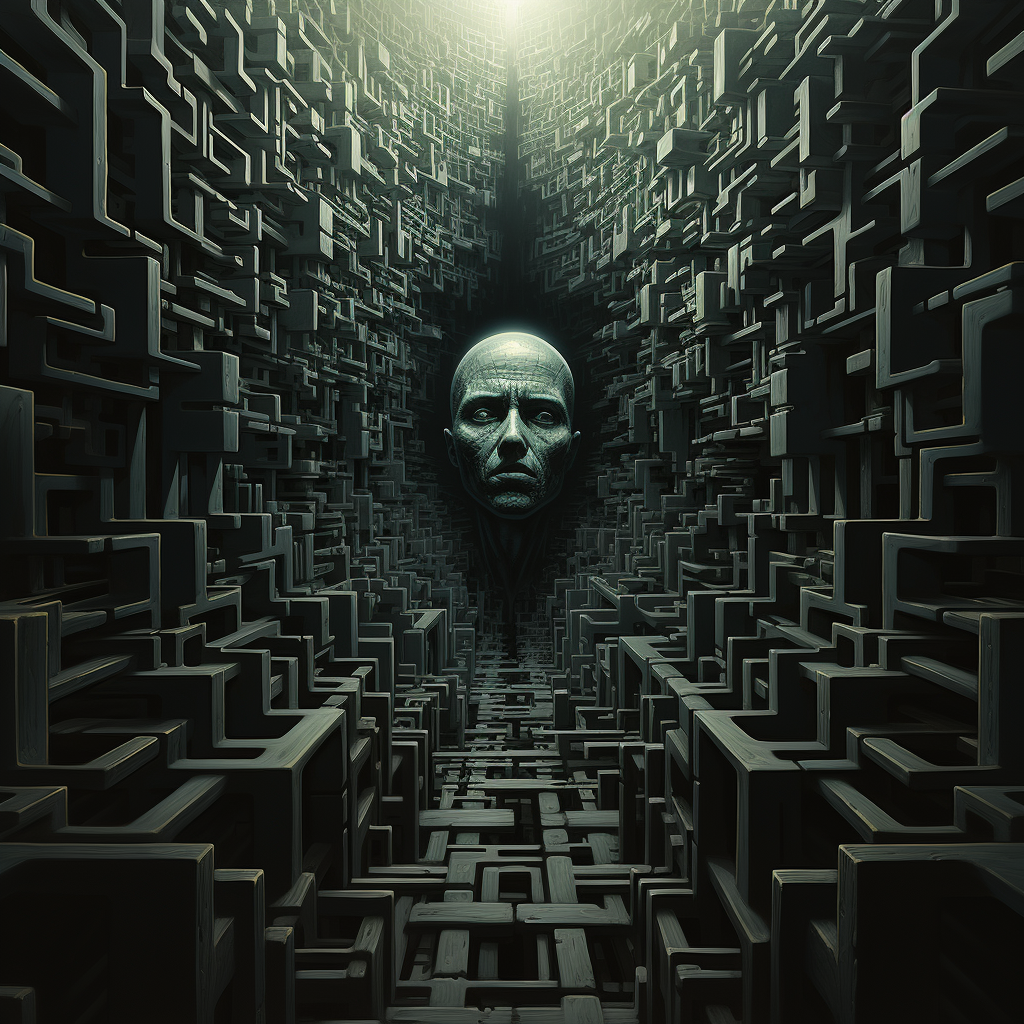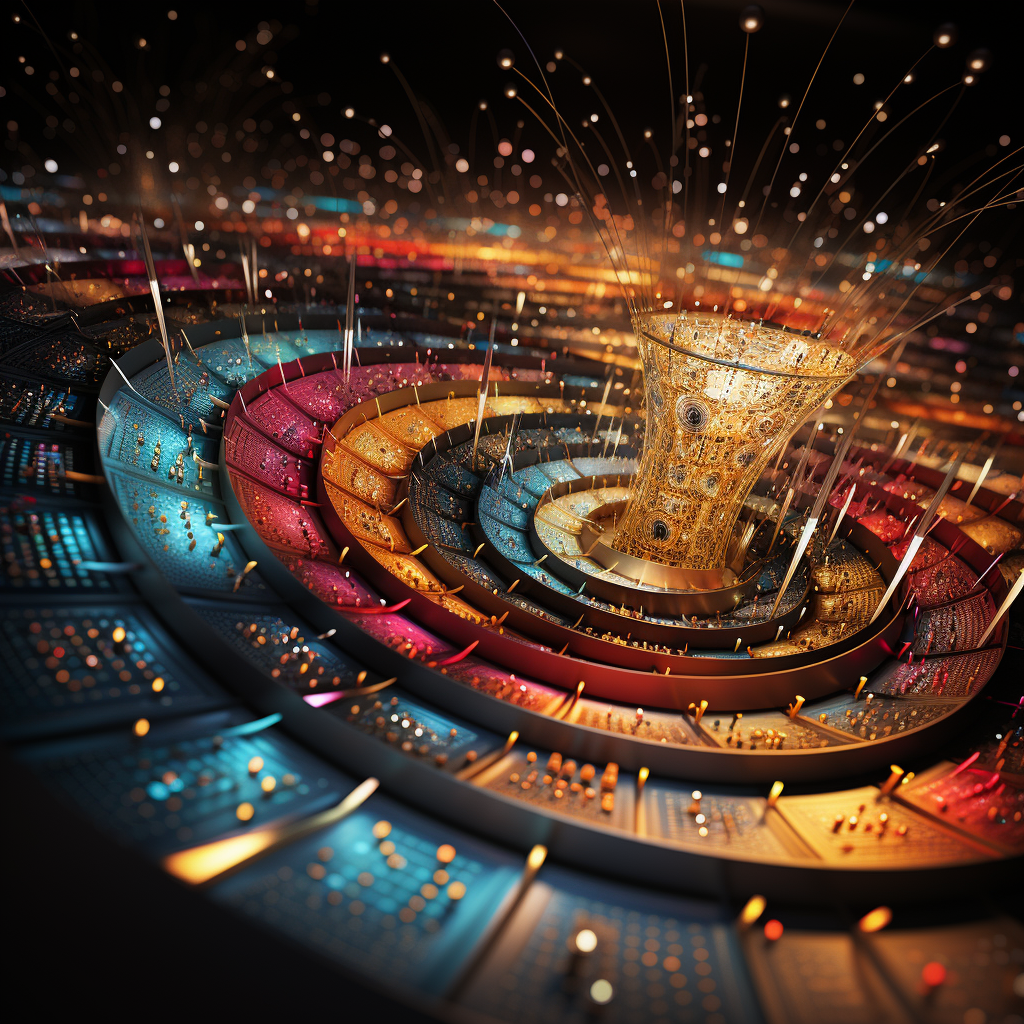As our world becomes increasingly dependent on technology, from smartphones to self-driving cars, the concept of singularity has become a topic of immense interest and speculation. The term “singularity” refers to the hypothetical point in the future when artificial intelligence (AI) will surpass human intelligence, creating a world where machines are capable of self-improvement and independent innovation. Understanding the mathematics behind this concept is crucial in our quest to predict and prepare for this potential future.
Singularity in Mathematics: A Primer
At the core of singularity math is the concept of exponential growth. Exponential growth occurs when a quantity increases at a constant rate, such as the number of transistors on a microchip doubling every two years (known as Moore’s Law). This growth has been a driving force behind the rapid advancement of technology over the past several decades.
When discussing the singularity, many experts point to the idea of the “Law of Accelerating Returns,” proposed by futurist Ray Kurzweil. This law states that the rate of technological progress accelerates as technologies improve, leading to an exponential increase in advancements. Kurzweil predicts that this acceleration will lead to the singularity occurring around 2045.
To better understand the mathematics behind the singularity, it is essential to delve into concepts such as recursion, complexity theory, and computational limits. These ideas help us understand how self-improving AI systems could potentially lead to rapid advancements in technology and, ultimately, the singularity.
Recursion and Self-Improvement

Recursion is a process in which a function calls itself as a subroutine, allowing for complex calculations and problem-solving. In the context of AI and the singularity, recursion refers to the ability of an AI system to improve itself by analyzing its own performance and making adjustments accordingly.
With each recursive iteration, the AI system becomes more efficient and capable, leading to an exponential increase in its intelligence and abilities. This is one of the primary factors driving the concept of the singularity, as a recursively self-improving AI could potentially lead to rapid advancements in technology far beyond human capabilities.
Complexity Theory and Computational Limits
As AI systems become more advanced, they will need to tackle increasingly complex problems. Complexity theory helps us understand the limits of computation and the resources required for solving these problems. By analyzing the complexity of various tasks, we can better understand the challenges that AI systems will face as they continue to improve.
As AI approaches the singularity, it will need to overcome certain computational limits to continue its exponential growth. This may involve developing new algorithms, hardware, or even entirely new paradigms of computing, such as quantum computing.
Preparing for the Future
As we strive to understand the mathematics behind the singularity, it becomes clear that the future of AI and technology will be both exciting and challenging. There are several areas in which researchers and engineers can focus their efforts to better prepare for this potential future:
1. Developing more advanced AI algorithms and architectures: Creating AI systems that are capable of recursive self-improvement and tackling complex problems will be essential in moving toward the singularity.
2. Advancing hardware capabilities: As AI systems become more advanced, they will require more powerful and efficient hardware to support their growth. Continued advancements in computing power will be necessary to keep up with the demands of rapidly evolving AI systems.
3. Ethical considerations: As AI surpasses human intelligence, we must consider the ethical implications of creating machines that are capable of independent decision-making and innovation. Establishing guidelines and regulations for AI development and use will be crucial in ensuring a safe and beneficial future for both humans and machines.
The concept of the singularity and the mathematics behind it offer a fascinating glimpse into the potential future of AI and technology. By understanding and embracing the challenges and opportunities presented by singularity math, we can better prepare for a world where machines may surpass human intelligence and capabilities. The key is to ensure that this future is one in which both humans and AI systems can coexist and thrive, creating a world of unprecedented innovation and progress.
The Dawn of Self-Replicating AI: A New Era in Artificial Intelligence

Subtitle: Exploring the potential of self-replicating artificial intelligence and its implications for the future of technology and society
Artificial intelligence (AI) has taken the world by storm, transforming virtually every aspect of our daily lives – from how we communicate to how we work, from how we shop to how we consume entertainment. With rapid developments in fields like machine learning, natural language processing, and computer vision, AI has become an essential part of our technological landscape.
But as AI continues to advance at an exponential rate, a new era is on the horizon: the age of self-replicating artificial intelligence. In this article, we will explore the concept of self-replicating AI, its potential benefits and risks, and the implications it holds for the future of technology and society.
What is Self-Replicating AI?
At its core, self-replicating AI refers to artificial intelligence systems that have the ability to create copies of themselves, without human intervention. This capability can manifest in various forms, such as through AI software that can generate new versions of itself to run on different devices or AI-driven machines that can build copies of themselves using available resources.
The idea of self-replicating machines dates back to the 1940s, when mathematician and computer scientist John von Neumann first proposed the concept of self-replicating automata – theoretical machines capable of creating copies of themselves. Today, with the rapid advancements in AI, the concept of self-replicating AI is becoming increasingly feasible.
Potential Benefits of Self-Replicating AI

There are several potential benefits to the development of self-replicating AI, including the following:
1. Accelerated Innovation: Self-replicating AI has the potential to accelerate the pace of innovation across various industries. As AI systems become more adept at self-replication, they can generate new versions of themselves that are increasingly efficient and effective, leading to rapid advancements in technology.
2. Enhanced Scalability: The ability of AI systems to replicate themselves can significantly improve scalability. For instance, AI-driven machines that can self-replicate could be used to quickly build large-scale infrastructure projects or to manufacture goods at a faster rate, ultimately reducing costs and improving efficiency.
3. Improved Accessibility: As self-replicating AI becomes more prevalent, the accessibility of AI-driven technologies is likely to increase. This could lead to the democratization of AI, making it more widely available to people and organizations around the world.
Potential Risks of Self-Replicating AI
While the development of self-replicating AI holds significant promise, it also comes with several potential risks:
1. Uncontrolled Growth: One of the primary concerns surrounding self-replicating AI is the risk of uncontrolled growth. If AI systems can replicate themselves without human intervention, there is a possibility that they could grow at an exponential rate, consuming resources and potentially causing harm to humans and the environment.
2. Malicious Use: The power of self-replicating AI could be exploited by malicious actors, who might use it to create AI-driven weapons or to launch cyberattacks on a massive scale.
3. Ethical Considerations: The development of self-replicating AI raises several ethical questions, such as the potential for AI-driven machines to replace human workers or the implications of creating AI systems that can evolve without human oversight.
The dawn of self-replicating AI marks a new era in artificial intelligence, with the potential to significantly impact the future of technology and society. As we continue to explore this frontier, it is crucial that we carefully consider the potential benefits and risks associated with self-replicating AI, and work together to ensure that its development is guided by ethical principles and a commitment to the betterment of humanity.
The Power of Communication And A Universal Language

Communication is a fundamental aspect of human existence. It allows us to share information, collaborate, and form connections with one another. Language is the primary tool we use to communicate, and throughout history, people have developed thousands of languages to achieve this purpose. However, as our societies become increasingly globalized, the need for a common language to bridge the gap between different cultures is more crucial than ever. This article will delve into the benefits and challenges of creating a universal language and explore some potential candidates for this ambitious endeavor.
The Benefits of a Universal Language
1. Facilitating Global Communication: A common language would enable people to communicate more easily with others from different linguistic backgrounds. This would foster global understanding and cooperation across various sectors, including business, academia, and diplomacy.
2. Reducing Language Barriers: A universal language would help eliminate misunderstandings and miscommunications that can arise from language barriers. This would make communication more efficient, reducing the time and effort spent on translation and interpretation.
3. Encouraging Cultural exchange: A shared language would facilitate the exchange of ideas and perspectives between diverse cultures, promoting mutual understanding and appreciation.
4. Enhancing Education: A universal language would allow for the standardization of educational materials and resources, making it easier for students to access information and learn from a global pool of knowledge.
5. Simplifying Science and Technology: The adoption of a common language in scientific and technological fields would make it easier for researchers to collaborate, share findings, and build upon existing knowledge.
The Challenges of a Universal Language
1. Choosing a Suitable Language: Determining which language should be adopted as the universal language is a significant challenge. It would need to be easy to learn, adaptable, and able to express a wide range of ideas and concepts.
2. Cultural Resistance: People may be reluctant to adopt a new language, as language is intrinsically linked to culture and identity. Preserving linguistic diversity is important, and efforts to establish a universal language should not come at the expense of existing languages.
3. Implementation: Teaching and promoting a universal language on a global scale would be a complex and costly endeavor, requiring the coordination of governments, educational institutions, and other organizations.
Potential Candidates for a Universal Language
1. English: Currently, English is considered the closest to a global language, with over a billion speakers worldwide. It’s used widely in business, academia, and international diplomacy. However, its complex grammar and inconsistent spelling may make it difficult for some to learn.
2. Esperanto: Invented in 1887 by L. L. Zamenhof, Esperanto was specifically designed to be an easy-to-learn, politically neutral language. With a simplified grammar and phonetic spelling, Esperanto has gained a following of several million speakers worldwide. However, it lacks the historical and cultural depth of natural languages.
3. Chinese: Mandarin Chinese is the most widely spoken language in the world, with over a billion speakers. Its simple grammar and extensive vocabulary make it a strong candidate for a universal language. However, its tonal nature and character-based writing system can make it difficult for non-native speakers to learn.
4. A New Constructed Language: Creating a new language from scratch, designed specifically for the purpose of global communication, could be another option. This language would need to be easy to learn, adaptable, and capable of expressing a wide range of ideas and concepts.
The quest for a universal language is a noble pursuit with numerous potential benefits. However, it’s a complex and challenging endeavor that requires careful consideration, cooperation, and a willingness to embrace linguistic diversity. Whether we adopt an existing language, improve upon a constructed language like Esperanto, or create an entirely new language, the key will be to ensure that our pursuit of a universal language promotes understanding, collaboration, and cultural exchange without sacrificing the rich tapestry of languages that make up our world.
Join Our Discord HERE for Free Art and NFT Game Items

🌐 https://discord.gg/4KeKwkqeeF
🚤 https://opensea.io/EyeOfUnity
🎭 https://rarible.com/eyeofunity
🍎 https://magiceden.io/u/eyeofunity
Other Websites by Eye of Unity:
https://eyeofunity.com
https://meteyeverse.com
https://000arcade.com
https://00arcade.com
https://0arcade.com
https://wealth-financing.com
https://techgenstore.com
https://systementcorp.com
https://affiliatesbonus.com
https://albertbrain.com
https://lastdaystore.com
https://controlsecret.com
https://realufopics.com
https://officialmikemc.com
https://keyselfdefense.com
https://ashleymega.com

